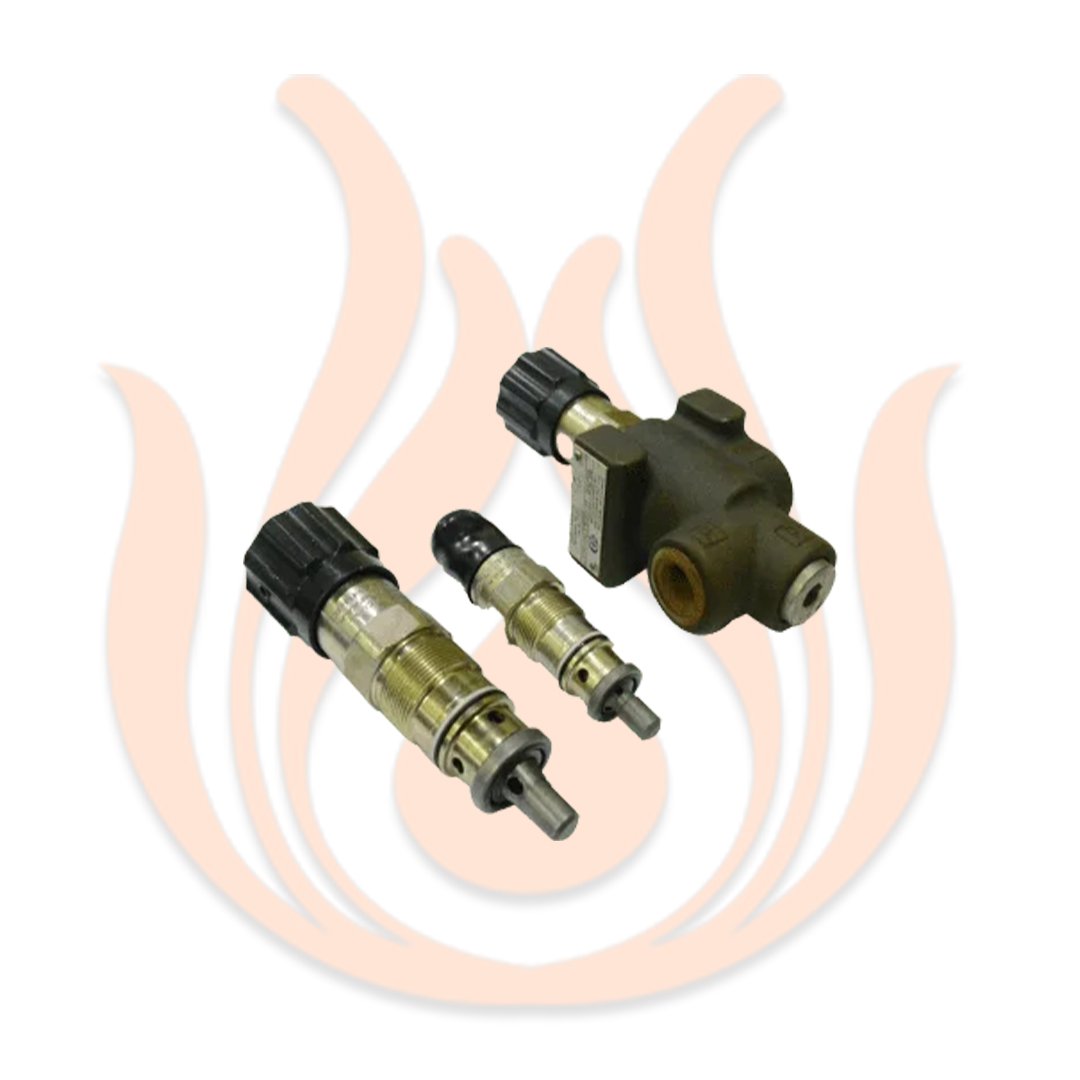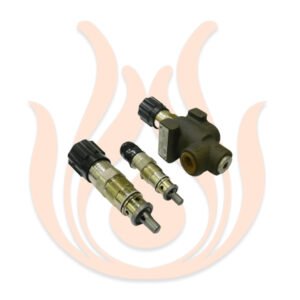Hydraulic Relief Valve
The hydraulic relief valve is the best component for releasing excess pressure from your hydraulic system. Get one from Lotus Traders today!
Hydraulic Relief Valve
- High Quality Materieals
- Compliance with Standards
- Clear product information
- Warranty & Supports
- Product testing & Certification
- Delivery & Policy
- Ask a Question
- Estimated Delivery: 5 Days – 10 Days
DESCRIPTION
A Concrete Mixer with Lift is an essential part of the process of construction. A concrete Lift Mixer Machine is commonly known as a cement mixer. A concrete Lift Mixer is an important component required for the construction of houses, roads, etc. The concrete Lift Mixer Machine helps in mixing cement, sand, gravel, and water to form concrete. These Lift mixer machines are often portable and used on construction sites. These are very fast machines that save time, energy, and labor cost. Lotus mainly concentrates on manufacturing this concrete lift mixer which makes it workable with specific compressive strength.
It is a type of concrete mixer that has a lift or hoist attached to it. This concrete mixer used to mix cement mixture, sand, and other aggregates to produce concrete of the required grade. It is a machine with dual benefits. This single machine can do both the tasks of mixing cement and lifting or hoisting it with a single-engine. Our device is capable of preparing concrete mixture which gives ample amount of time to the workers to use the concrete before it hardens time.
About Hydraulic Relief Valve
The hydraulic relief valve’s primary responsibility is to release excess pressure from a hydraulic circuit. It is a major part in a hydraulic system designed to protect its functional status by preventing high pressure from damaging the other components or even system failure. This relief valve will remove the extra pressure at the first sign of danger!
In the modern world, since the field of hydraulics have become hopelessly dependent on the valve’s spectacular efficiency, it has gone through constant innovation and advancement. Now, the hydraulic pressure relief valve comes in many types and configurations to align with the specific requirements of different hydraulic systems.
Key Features of Hydraulic Relief Valve
Most of the hydraulic relief valve’s key features focus on protecting the hydraulic system. It has characteristics in such a way that it will open at a preset pressure rating to protect pressure levels and prevent other components from suffering against their designed limits.
The most important features that will exist in a relief valve across all its models are:
The pressure rating: This product keeps in check a certain pressure rating. When the pressure touches this value, the valve will open. It means the system has reached a critical stage!
The adjustment option: But the pressure is not often consistent, as operators can change the desired pressure limit to accommodate different operational requirements.
The two primary acting models: Depending on the requirements, the valve can operate as a direct-acting component, where it responds directly to sudden system pressure, or the pilot-operated component, where there is a separate control circuit for sensing and regulating the system’s pressure.
The flow capacity: Additionally, the valve must be competent enough to handle the maximum flow rate that occurs in the hydraulic system.
The fast response: It must also be quick enough to respond to immediate pressure changes to maintain the integrity of the hydraulic system!
The leakage prevention: No amount of fluid will run loose when the relief valve works. Its design should keep the fluid under a tight seal when it is not actively releasing pressure.
The high durability: Since the hydraulic relief valve must withstand harsh working conditions, manufacturers build it from durable materials such as stainless steel or hardened alloys.
The mounting options: Also, since the valve is a reliable component for various systems ranging from hydraulic cylinders to hydraulic pumps, it comes in various configurations targeting different mounting options.
Understanding all these features in your hydraulic valve is crucial, so that you can select the perfect one for your hydraulic system!
Working Procedure of Hydraulic Relief Valve
We know by now that the hydraulic relief valve’s primary principle is to maintain pressure regulation. But how does it work to maintain that precise flow? There is a straightforward procedure for this.
- When under normal operation, the relief valve remains closed. The pressure is within acceptable limits and below the predetermined set point.
- When the pressure increases and surpasses the set limit, the relief valve jumps into action!
- Upon reaching the set limit, the pressure overcomes the force within the relief valve – via a spring or a special mechanism.
- The valve opens at once – allowing excess fluid to flow out and return to the reservoir.
- This excess fluid, once returned to the reservoir, remains fit for further use in the hydraulic process.
- Once the pressure comes back under the preset limit, the relief valve’s spring force once again becomes greater than the system pressure.
- The valve shuts back up, as the steady flow of hydraulic liquid through the system continues!
Optional elements in this process exists, such as some models allow an adjustable feature to change the pressure limit according to project requirements. Therefore, this safety device is the holy grail to protect your system from potential failure or damage due to overpressure!
Applications of Hydraulic Relief Valve
The hydraulic relief valve has found refuge in a wide section of hydraulic systems across various industries. If hydraulic power is a necessity in one field, the relief valve is an obligation in that field! Some of the most prominent industries harnessing the power of the hydraulic relief valve are:
Industrial Machinery: In this industry, certain equipment such as presses, injection molding machines, and metal forming equipment have the valve installed into their hydraulic systems.
Construction Equipment: In construction, excavators, loaders, and cranes also have the relief valve to prevent potential damage.
Aerospace Industry: In aerospace, the valve acts as a crucial component for landing gear, flight control systems, and other hydraulic components.
Mobile Equipment: The valve also enhances hydraulic systems that focus on making agricultural machinery, forestry equipment, and material handling machines better.
Automotive Industry: In this industry, the valve is a mainstay in power steering systems and hydraulic brake systems to prevent accidents.
Marine Industry: In the marine industry, ship steering systems and winches also need the valve to maintain safe and reliable operation.
Oil and Gas Sector: Drilling rigs and production machinery comes equipped with hydraulic systems that depend on the hydraulic relief valve too!
Power Generation: In power station, the valve is integral to power generation equipment such as turbines and generators! Its primary purpose in this sector is to prevent unstable pressure fluctuations.
Some more areas of importance where the valve selflessly carries out its duties are in manufacturing equipment such as metal stamping machines and plastic molding machines, in process control systems to maintain pressure levels for sensitive components, and in testing equipment to ensure the safety of their operators, etc.
Advantages of Hydraulic Relief Valve
Many advantages line up to enhance the importance of the hydraulic relief valve! Beside its commitment to provide protection against unwanted pressure levels, it also promises on maintaining system safety and preventing catastrophic failure, which can harm operators and surrounding environments.
Additional rewards like the valve’s commitment to preserve the system’s pumps, cylinders, and motors are a bonus, while it attempts to fit across a wide range of hydraulic systems with the intention of providing adjustability and versatility.
The valve is also robust and durable due to its composition comprising of stainless steel or hardened allow. It is responsive to sudden pressure changes and can detect any abnormalities in the system pressure before the human eye can figure it out!
Some final advantages that round up the valve’s value are its reduced maintenance costs, its adhered to meet safety standards, and its dedication to reduce energy waste without ever compromising its efficiency.
Why Choose Lotus Traders
So, are you in the market browsing for the best hydraulic relief valve? Lotus Traders will be more than happy to provide you with one!
Judging by current market values, a proper relief valve 1-inch hydraulic relief valve’s starting price tag is Rs. 650. There are more expensive models too, such as the MBP-01-H-30 hydraulic valve selling for about Rs. 3500 per piece. If you plan to buy a set, the best proportional valves will come for about Rs. 22, 000 – a whopping number!
A friendly reminder that these prices are not wholly accurate; they only reflect the market’s current ratios, which can often change due to availability or demand. For a better idea, you can get a quote from Lotus Traders to understand the best price for a hydraulic relief valve. Or better still, you can contact us today for all the details!
Frequently Asked Questions
The hydraulic relief valve is a major part in a hydraulic system designed to protect its functional status by preventing high pressure from damaging the other components or even system failure. This relief valve will remove the extra pressure at the first sign of danger!
The primary hydraulic relief valve function is to maintain the pressure limit – it does so by diverting as much of the excess hydraulic fluid as required back to its reservoir.
The best hydraulic relief valve price is hard to determine considering different models have different price values based on region and market demand. However, if you wish to know more, you may visit our website to get a quote on the exact price.
The correct hydraulic relief valve adjustment is impossible to predict considering different projects require different results from their hydraulic systems. Since the valve offers the option to adjust its limit values, the correct adjustment will depend on its chore pressure targets.
If your hydraulic relief valve is stuck open, it happens because of the spring malfunctioning. Perhaps a replacement is in order, as an impaired piston will lead to inconsistencies from the hydraulic system further down the road.
To set or test a hydraulic relief valve, there is a certain method known as the “Pop Test.” This method tests the valve’s pressure limit by compressing the pressure into the valve’s inlet. If the pressure is too high, the valve will spring open!
When a hydraulic system reaches the set limit, the pressure overcomes the force within the relief valve – via a spring or a special mechanism. The valve opens at once – allowing excess fluid to flow out and return to the reservoir. Once the pressure comes back under the preset limit, the relief valve’s spring force once again becomes greater than the system pressure, and the valve shuts down.
The three major types of hydraulic pressure relief valves that have dominated the current market space are:
- Conventional spring-loaded valves
- Balanced spring-loaded valves
- Pilot-operated valves
If you wish to own a hydraulic relief valve today, you may contact Lotus Traders for a firsthand quote! Our products are the best the industry has to offer, as we maintain industrial standards while producing our top-line equipment.
Based in Zoo Road, Guwahati, Lotus Traders has consistently supplied the best relief valves all over Northeast India for fourteen years. Therefore, pick up your phone and drop us a call today!








